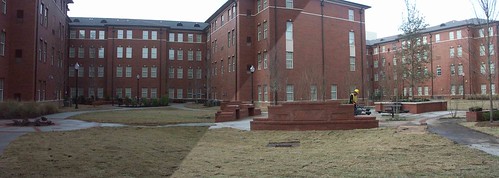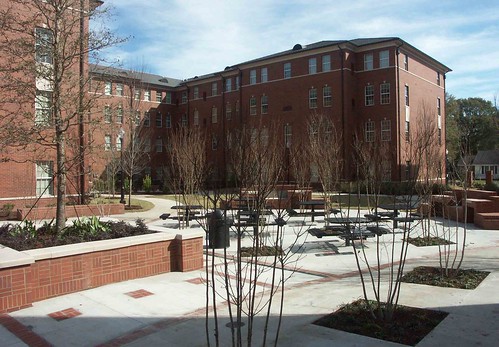As concrete cures (hardens) it shrinks for various reasons. In a foundation, the footings are thicker than the slabs and as a result the footings don't move. So as the concrete shrinks the only place for it to move is in the slab because it's thinner (typically four to five inches) resulting in cracks. This is objectionable for many reasons and it is best to keep the cracks to a minimum. The post tension cables are anchored on one edge of the concrete while the other end has a wedge shaped thimble cast into the edge. The cable is in a plastic sheath to keep it from bonding to the concrete. After the concrete has set for a few days they will place a hydraulic jack on the thimble end of the cable and pull it tight. They then force a wedge into the cast in place thimble to grab onto the cable. They then release the cable. They do this twice to get the full benefit of the cable. (if they did it all at once or to soon the concrete would not be strong enough to withstand the force of the cable). The result is that the concrete slab and foundation are pulled together by the tension in the cable. When this happens any cracks that may have developed are pulled together. Imagine a very strong rubber band pulling the concrete together. The result is the cable is in tension and the concrete is in compression with a net result of minimizing cracks that have developed and eliminating any future cracks.
If you watch it being done, and don't know what they are doing, it is quite perplexing. The number one thing to remember if you are in the area when they are doing this is to not stand in line with the cable. If the cable or the anchor would happen to break, that cable will shoot out of that concrete like a cannon ball. This is one of the main disadvantage of post tension foundations. Imagine a plumber or electrician breaking into the floor to make a future repair and unknowingly cuts one of the cables. It could very well kill them at worse or at best scare the hell out of them.
I hope this answers your question.







 Quote
Quote



























